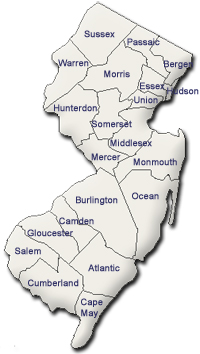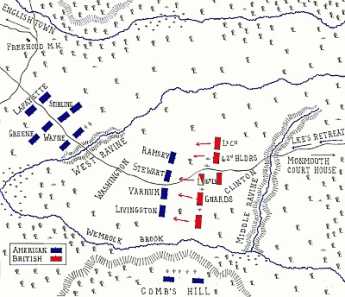Related Topics
The British Attack Philadelphia
Fighting in the Revolutionary War lasted eight years; for two years (June 1776 to June 1778) Philadelphia was the main military objective of the British.
Historical Preservation
The 20% federal tax credit for historic preservation is said to have been the special pet of Senator Lugar of Indiana. Much of the recent transformation of Philadelphia's downtown is attributed to this incentive.
Up the King's High Way
New Jersey has a narrow waistline, with New York harbor at one end, and Delaware Bay on the other. Traffic and history travelled the Kings Highway along this path between New York and Philadelphia.
New Jersey (State of)
 The Garden State really has two different states of mind. The motto is Liberty and Prosperity.
The Garden State really has two different states of mind. The motto is Liberty and Prosperity.
Pacifist Pennsylvania, Invaded Many Times
Pennsylvania was founded as a pacifist utopia, and currently regards itself as protected by vast oceans. But Pennsylvania has been seriously invaded at least six times.
Right Angle Club 2011
As long as there is anything to say about Philadelphia, the Right Angle Club will search it out, and say it.
Revolution in New Jersey
Early, brief but significant.
Battle of Monmouth

|
| Battle of Monmouth |
A moving army tends to get strung out on roads through unfamiliar territory, and when boarding ships leaves a steadily diminishing rear guard to protect the fleet. Thus, General Clinton's retreating British army presented an opportunity for Washington to harass them, take advantage of unexpected delays, and to be wherever they were going. So Washington ordered the Continental Army out of Valley Forge, to pursue the retreating British as they moved over the Delaware River to Camden, joining the King's Highway at Haddonfield, heading for Sandy Hook and the waiting ships of the British Navy. As both armies approached Monmouth Court House, Washington caught up with Clinton and ordered his deputy, General Charles Lee, to attack with an advance force that would hold the British in place until Washington's main force could catch up. Both armies had about 13,000 soldiers in strength, but only 9,000 of Clinton's men were engaged because of their strung-out deployment.

|
| Battle of Monmouth Map |
Washington's battle plan was therefore vindicated, and the next showed his characteristic ability to use terrain to his advantage. The New Jersey countryside breaks up into hills as it approaches New York harbor, and its valleys between hills tend to contain creeks at the bottom. Therefore, the retreating British were forced into narrowing valleys which exposed them to flanking maneuvers but reduced the room for Washington to be outflanked. Lee failed to take such effective advantage of the terrain and made only half-hearted attacks on the British. When Washington and the main body of troops caught up with him, Lee was promptly relieved of command and later court-marshaled. In his place, Washington sent Nathaniel Greene around the enemy's southern flank, setting up four artillery pieces on a high hill, protected from British attack by a flooded creek. He was thus able to "enfilade" the British line, aiming cannonballs at the near end where they would bounce up the British line if they fell short, or land in the far end of the British line when they overshot. The cannons now look fairly small and puny, but with a well-trained crew of a dozen artillerymen, each one could get off five to ten shots a minute. With four pieces of artillery, they could drop twenty to forty shots a minute onto the confused and compressed formation of enemy troops. The battle went on all day, the longest battle of the Revolution.
Under the cover of darkness, Clinton withdrew his troops toward Sandy Hook, leaving six hundred casualties on the ground, two-thirds of the British. The British could claim they achieved their objective of reaching the ships, but with greater casualties, and forced to withdraw in the face of discovering a much better-disciplined American army than they had ever faced. They acquired a new respect for Washington, who demonstrated boldness and outstanding tactics, with professionalism quite equal to their own.
REFERENCES
| New Jersey in the American Revolution: Barbara J. Mitnick: ISBN-13: 978-0813540955 | Amazon |
Originally published: Monday, June 27, 2011; most-recently modified: Tuesday, May 14, 2019
| Posted by: jason | Feb 9, 2012 8:45 AM |
| Posted by: Dorothy | Sep 6, 2011 10:14 AM |